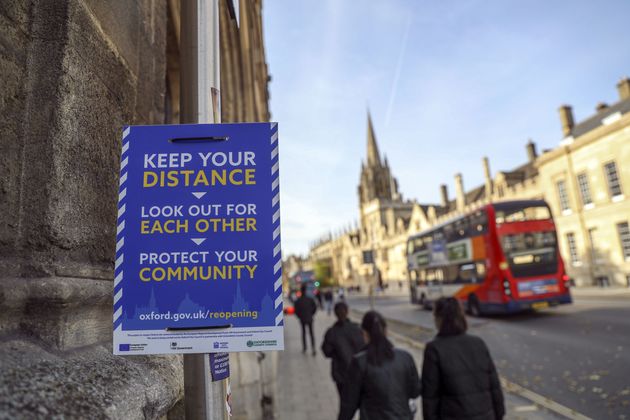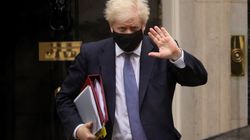
This was the week when things fell apart. Rumblings of discontent about the government’s handling of the pandemic turned into open revolt as the Northern mayors – particularly Andy Burnham of Manchester – stood up and refused to accept proposals to place them at the highest level of the new three-tier system of Covid restrictions.
Why? At first glance it seems eminently sensible that different areas of the country with different levels of infection should be subject to different measures.
Why close the pubs in Lowestoft (where the case rate per 100,000 is under 50) because of the problems in Liverpool (where the rate is pushing 600)?
Indeed, the general idea of local tiers is not in itself a bad one. However, we are not dealing with generalities.
Somehow the tier system has managed to be even more unclear and generated a greater sense of inequity (and hence resistance) than before.
Rather, we are faced with an acute crisis and we must consider whether the specific tier system devised by the UK government makes sense and whether it makes sense to impose it at this specific time. The answer to both questions is a resounding no.
Let’s start by looking at the details of the present system. It has three core problems.
First, a central justification for replacing the present hodge-podge of restrictions across the country with three tiers was to create clarity and a sense of equity.
No-one – not even the prime minister – could remember who was allowed to do what and where, and there was a growing suspicion that some areas (the South) were being treated better than others (the North).
In principle, a tier system would overcome that by creating a simple and transparent system where it was clear that the same rules applied to everyone.
But that is dependent upon there being clear, health-based criteria for moving from one tier to the next, along with consistent restrictions within each tier.
But in the event, the basis for deciding which tier you were in was far from clear and seemed dependent on political horse trading. Equally, the restrictions in a given tier were far from consistent, varied from area to area, and again seemed more a matter of politics than public health. Somehow the tier system managed to be even more unclear and generated a greater sense of inequity (and hence resistance) than before.
Even if an effective local system might have been sufficient at some point, that point is now well past.
Second, the notion of tiers is framed in an entirely negative way. It is all about the restrictions imposed on people – what they can’t do. This is encapsulated in the language of lockdown – a term we associated with prisons, with misbehaviour and with punishment.
But infections are a function of exposure to the virus, and exposure is greater among those who are poorer and more vulnerable: they are more likely to have to go to work, more likely to use public transport, more likely to live in crowded housing.
That is why the poorest areas of the country are four times more likely to be in “lockdown”. The reality is that infection reflects deprivation and the response should be greater support: support in terms of information, of testing facilities and, of course, financial compensation to workers and local businesses who are affected by the measurers necessary to combat the virus.
That was the core of Andy Burnham’s concerns. On October 20, he tweeted: “I have fought for the ability to support low-paid people and businesses who will be most harmed by Tier 3 closures”.
Had the government framed the tier system in terms of support and provided adequate funding, the disputes with the localities would not have happened.
Third, the measures in the tiers – even at the highest level of alert – were simply inadequate. On September 21, the government scientific advisory group SAGE met to consider the measures necessary to halt the start of a rise in infections.
What they proposed went far further than anything the government is introducing: ensuring all but essential workers stay at home, closing all bars and restaurants, stopping contact between households in the home, moving all university teaching online where possible. On that day, new infections were at about 4,500 per day. Now they are about 20,000, some five times higher. If anything, even more would need to be done to bring things back under control. The government is doing far less.
One might fairly retort that this is all very well, but would people actually accept such severe measures when many are already objecting to milder measures?
But the objections are less to the imposition of restrictions than cynicism about measures, which people don’t believe will work and hence are not worth the sacrifice. This is backed up by recent research showing that perceived effectiveness is critical to adherence.
What we have at the moment is the worst of all worlds: a fudge which has resulted in measures that do enough harm to damage livelihoods but are not effective enough to control the virus and save lives. People showed clearly in spring that they will make major sacrifices if they can see the point. What they won’t do is to make sacrifices just for the sake of it.
So, the local tier system we have ruins a good idea through botched and half-hearted implementation. It would not be fit for purpose at any time. But it is especially inadequate right now.
You don’t wait until your house is burning down before you call the Fire Brigade.
The SAGE recommendations of September 21 weren’t just about what measures should be applied, but where they should be applied. They called for a national circuit breaker not just local action. And they called for it as the only way of bringing infections down to manageable levels across the country. The rationale for this position has only become clearer over time.
It may be true that areas like Liverpool have far higher infection rates than places like Lowestoft. But infections are rising in every region of England, as are hospitalisations and deaths.
It may be true that some areas have broken out into a blaze while others are just smouldering. But you don’t wait until your house is burning down before you call the Fire Brigade. Indeed, it makes far more sense to act early before the damage is too great. The longer you leave things, the more effort is needed to get things back under control, and the more is lost along the way.
Even if an effective local system might have been sufficient at some point, that point is now well past. Each day now, indecision and fudge is costing lives.
Remember the fateful week of 16-23 March when the government delayed going into a lockdown – a delay which probably inflated the deaths by many thousands. We must not repeat that mistake.
Moreover, when the circuit breaker has done its job, when infections are brought down and restrictions are lifted, we must not repeat the mistakes of June when we failed to put in place measures that would suppress the virus and stop yet another set of restrictions being needed.
Above all, we must demonstrate that the sacrifices we are asking for will not be wasted.
Stephen Reicher is Wardlaw Professor of Psychology at the University of St. Andrews and member of Independent SAGE.





